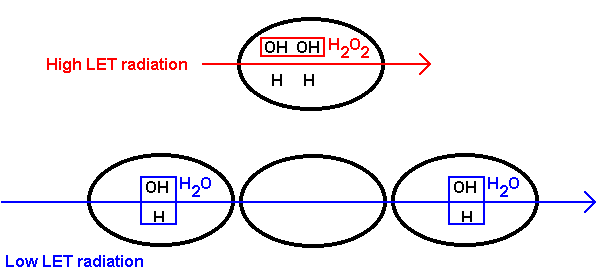
Linear
Energy Transfer & Specific Ionization
LET (linear energy transfer)
is the amount of energy released by an ionizing particle
or waveform over the length of its decay track. Specific
Ionization is the number of ion pairs produced per
unit track length.
High LET radiation
(like alpha & beta particles) ionizes water
into H and OH radicals over a very short track. In
the example, two ionization events occur in a single cell, so as
to form a pair of OH radicals
that can recombine to form peroxide, H2O2, which
can produce oxidative damage to DNA and other cellular
components.
Low LET radiation
(like X- or gamma rays) also ionizes water
molecules, but over a much longer track. In the example, the two
events occur in separate cells, such that the H and OH
radicals reunite and reform H2O.
In health physics, because it has low
penetrating power and is delivered in low doses, high LET radiation
is dangerous only over very short distances. Because low LET radiation
has high penetrating power and is delivered in high doses, unless
shielded it is dangerous over long and short distances.

